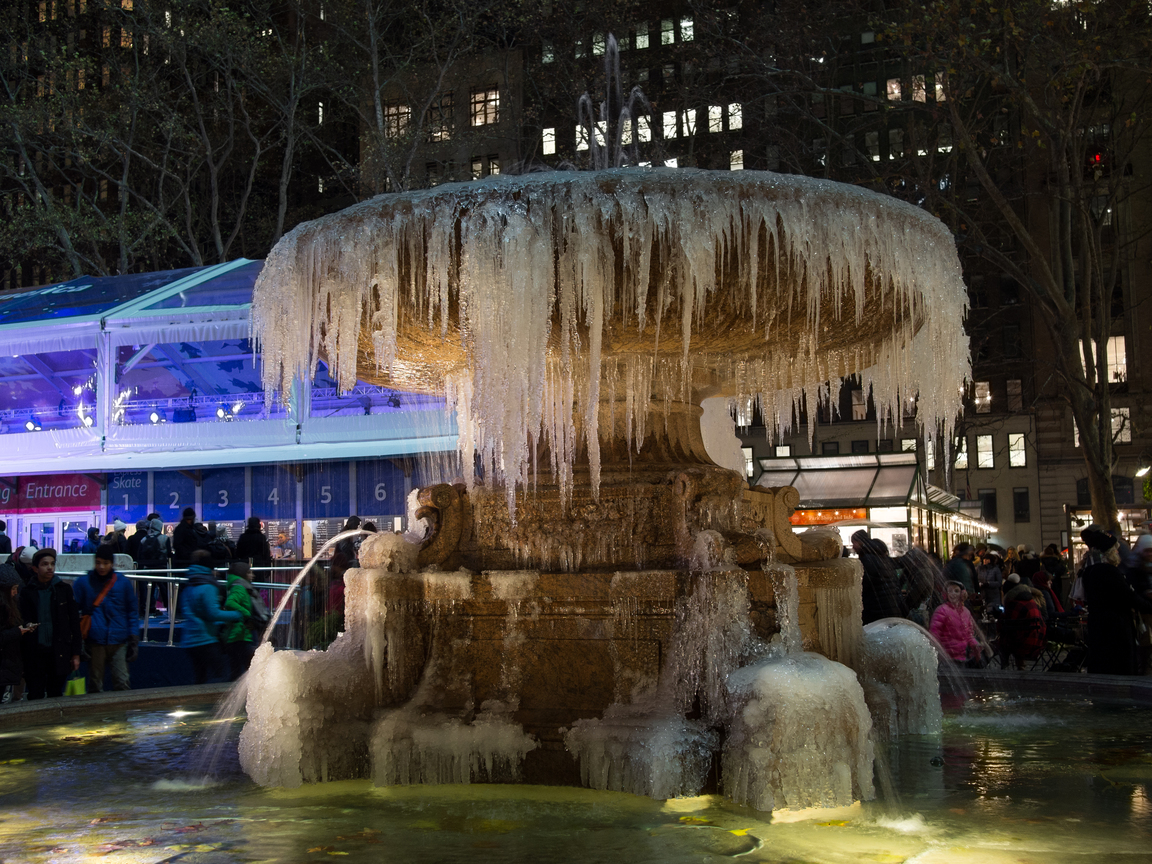Bryant Park, located in Midtown Manhattan, is a testament to urban landscape design and architectural harmony. Its architecture reflects a rich blend of French Classical and Beaux-Arts styles, creating a serene oasis amidst the bustling city. The park’s design, influenced by the Luxembourg Gardens in Paris, features formal pathways, stone balustrades, and allées of London Plane trees. Adjacent to the iconic New York Public Library, Bryant Park’s architecture seamlessly integrates with its surroundings, offering a unique urban experience that combines historical elegance with modern functionality.
What Are the Key Architectural Styles in Bryant Park?

Bryant Park’s architecture is primarily influenced by two major styles:
-
French Classical Style: The park’s 1933-1934 redesign by Lusby Simpson introduced elements reminiscent of formal French gardens.
-
Beaux-Arts Influence: The adjacent New York Public Library, completed in 1911, exemplifies this grand architectural style.
These styles are evident in the park’s:
- Formal layout with symmetrical pathways
- Central lawn surrounded by tree-lined allées
- Stone balustrades and terraces
- Ornate fountains and sculptures
How Does the Park’s Layout Reflect Its Architectural Design?

The park’s layout is a crucial aspect of its architectural design:
- Central Lawn: A large, open space that serves as the park’s focal point
- Formal Pathways: Symmetrical walkways that create a structured flow through the park
- Oval Plaza: Houses the Josephine Shaw Lowell Memorial Fountain
- Raised Terrace: Connects the park to the New York Public Library
This layout creates distinct zones within the park, each serving a specific purpose while maintaining a cohesive overall design.
What Materials Are Predominantly Used in Bryant Park’s Architecture?
The architectural elements of Bryant Park utilize a variety of materials:
| Material | Usage |
|---|---|
| Stone | Paving, balustrades, terraces |
| Brick | Pathways, some structural elements |
| Iron | Fencing around the park perimeter |
| Wood | Benches and some decorative elements |
These materials were chosen for their durability, aesthetic appeal, and ability to complement the surrounding urban environment.
How Do Seasonal Changes Affect the Park’s Architectural Appearance?
While the park’s core architectural elements remain constant, seasonal changes significantly impact its overall appearance:
- Spring: Blooming flowers add color to the formal gardens
- Summer: Lush greenery of the London Plane trees provides shade and verdant scenery
- Fall: Changing foliage creates a warm, autumnal palette
- Winter: Holiday markets and lighting displays transform the park into a festive wonderland
These seasonal changes enhance the park’s architectural features, creating a dynamic visual experience throughout the year.
What Are the Notable Architectural Elements of Surrounding Buildings?
The architecture of Bryant Park is complemented by several notable surrounding structures:
- New York Public Library:
- Beaux-Arts style
- Completed in 1911
-
Features a raised terrace connecting to the park
-
Bryant Park Hotel (formerly American Radiator Building):
- Art Deco skyscraper
- Designed by Raymond Hood in 1924
- Black brick with gold accents and dramatic lighting
These buildings contribute to the overall architectural narrative of the area, creating a harmonious blend of styles and eras.
How Are Seating Arrangements Integrated into the Park’s Design?
Seating in Bryant Park is thoughtfully integrated into its architectural design:
- Fixed Benches: Located along retaining walls and pathways
- Movable Chairs and Tables: Scattered around the central lawn and near the fountain
- Terrace Seating: Overlooking the main lawn area
This variety of seating options allows visitors to enjoy different perspectives of the park’s architecture while promoting social interaction and relaxation.
What Are the Key Features of Event Spaces in Bryant Park?
Bryant Park’s design includes versatile event spaces:
- Central Lawn: Used for large gatherings, concerts, and outdoor cinema
- Oval Plaza: Hosts smaller events and performances
- Terrace Areas: Suitable for receptions and small gatherings
These spaces are designed to be flexible, accommodating various event types while preserving the park’s architectural integrity.
How Does the Park’s Architecture Facilitate Public Use and Events?
The park’s architecture is designed to support public use and events through:
- Flexible Open Spaces: The central lawn and plaza areas can be adapted for different event types.
- Integrated Amenities: Restrooms, concession kiosks, and restaurant pavilions are seamlessly incorporated into the park’s design.
- Accessible Pathways: Wide, well-maintained walkways ensure easy navigation during events.
- Strategic Lighting: Architectural lighting enhances the park’s usability during evening events.
These features allow the park to host a wide range of activities while maintaining its architectural charm.
What Rules Govern the Use of Bryant Park’s Architectural Spaces?
The use of Bryant Park’s architectural spaces is governed by several rules:
- Event permits are required for organized gatherings
- Specific areas are designated for different activities (e.g., quiet zones, performance spaces)
- Preservation guidelines protect the park’s historical and architectural elements
- Public access is maintained to key areas during private events
These rules ensure the park’s architecture remains preserved while allowing for diverse public use.
How Has Bryant Park’s Architecture Evolved Over Time?
Bryant Park’s architecture has undergone several significant changes:
- 1933-1934: Major redesign by Lusby Simpson introducing French Classical elements
- 1988-1992: Renovation adding modern amenities while preserving historical features
- Ongoing: Regular maintenance and minor updates to accommodate changing urban needs
These evolutions have maintained the park’s historical significance while adapting to contemporary requirements.
References:
1. https://bryantpark.org/blog/history
2. https://en.wikipedia.org/wiki/Bryant_Park
3. https://bryantpark.org/blog/history-of-bryant-park-the-middle-years
